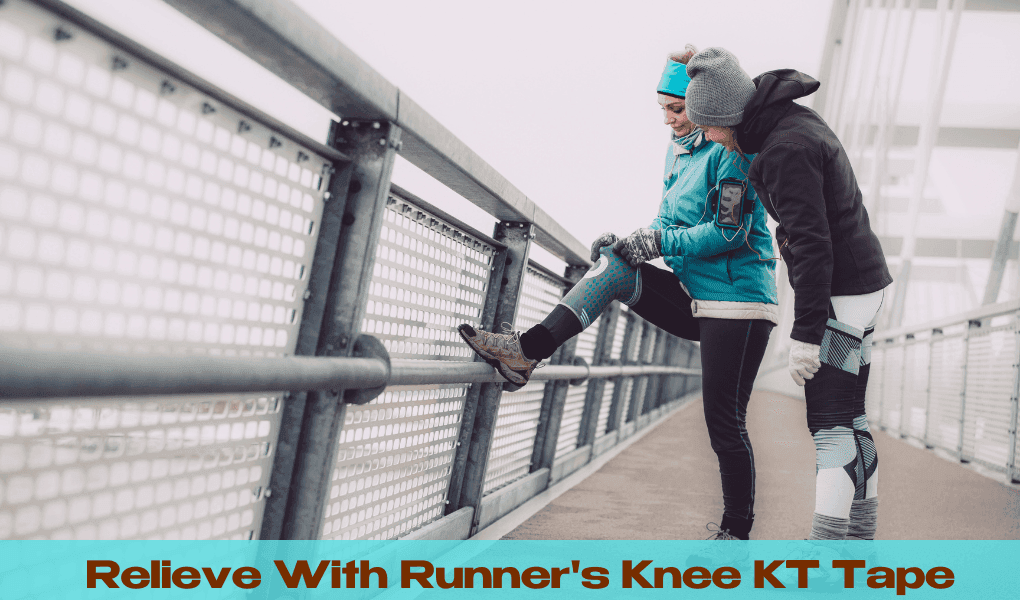
Introduction to running with a backpack
Running with a backpack is quite an adventurous and freeing idea someone can consider. For train-funded enthusiasts willing to carry their outdoor activities to a course of running with a backpack or novice visits whose aim is to do some outdoor running, running with a backpack is an exciting activity with many facets. In this ultimate guide, I will provide you with important information and tips to minimize the forces acting on the body in so doing, making the undertaking enjoyable.
Running with a backpack offers one the essence of doing other things during a workout. For instance, you may need to stuff some essential things for a day trip that involves some climbing exercise, or you are too fond of easy access to your belongings. this activity demands a specific set of techniques and considerations to maintain balance, prevent discomfort, and maximize efficiency.
As each component will be addressed—backpack on, running out, and hurdles during the excursion—you will learn what to look for when it comes to the right pack, how to position it correctly, and how to cope with some common difficulties. This is an extremely useful device, even for the most experienced tourist, which will give quite a lot of freedom of action.
Why Running with a Backpack?

Running with a backpack is advantageous in terms of practicality and fitness, so a running backpack is an essential accessory for all kinds of runners. For urban runners, it facilitates the commutation process, as their phone, wallet, and a change of clothes can be carried when moving on foot. It is crucial for trail runners and athletes who dedicate themselves to marathon races because it allows them to take food, drinks, and safety equipment and thus be independent while running long distances.
In addition, the extra weight encourages better stability and core strength while enhancing endurance and overall fitness due to pushing through more resistance. Using a good backpack for running helps the runner enjoy new terrain, get ready for anything, and test their body fitness at the same time.
Convenience for Commuting
Backpacking while running solves the problem of individuals wishing to keep their daily commuting routine from their workouts. Instead of driving to work or taking the subway, you can jog to work or for classes instead while packing everything necessary for the day. A running backpack can accommodate:
Clothes for a change at work
Small hygiene items (deodorant, face wipes, etc.)
Laptop/tablet (if your backpack design is stable enough)
Light food or Bottle of Water
Mobile phone, freight, and key
This way, you incorporate any extra commuting time into the time spent exercising, meaning there is no additional workout to be done later in the day. Many runners benefit from this, as it saves commuting hours and gas fuel without sacrificing the exercise pre- and post-work periods.
Staying Hydrated and Fueled on Long Runs
For long-distance runners or trail runners, carrying essential supplies such as water, energy gels, or snacks is crucial to avoid dehydration and maintain energy levels. A When it comes to long-distance racing or racing on the trails, various supplies like water, energy gels, and some food must be carried out to prevent dehydration and loss of energy. When on a running trip, the use of a running backpack is essential because it allows you to store in:
- A hydration bladder (or water bottles)
- Nutritional gels or energy bars
- First aid essentials for emergencies (especially on trails)
- Maps or navigation devices
Carrying such items ensures that more relative time can be spent running without the need to stop to get supplies. This is especially of concern for endurance athletes or for runners undergoing training to take part in marathons and ultra-marathons, among other long races.
Training with Extra Weight for Improved Fitness
However, running with a backpack also includes an extra challenge, as you now carry additional weight. This weight is beneficial over time, as it can help improve your endurance and strength. The extra load stresses your muscles, particularly your core, back, and legs, making them work over time, resulting in better fitness improvements.
- Leg and Back Strength: Its effect on the body can also be derived with the use of a backpack, especially while running. The additional weight simulates resistance training, facilitating muscle development of the legs and back.
- Core Strength: When running with a backpack, the need for additional stability and balance increases. This is achieved by engaging the core muscles to maintain proper posture and hold the weight.
- Cardio Fitness: The additional weight provides more cardiovascular work, which is more strenuous than without the pack. This makes the run more intense and helps to build more overall cardio.
- Multitasking: Since it is possible to run with a backpack, you can include it in your daily activities, such as going to work or doing errands. This is particularly useful for people who have busy schedules.
Enhanced Adventure and Exploration
Carrying a backpack while running presents new opportunities for adventure. You do not need support from external sources; you can cover longer trails, run in different areas, and increase your distance. This allows you to travel further on established routes, parks, and off-road courses.
For runners who prefer to do their navigation and do not mind being out for longer periods, being able to carry food, maps, and equipment can quickly turn a quick sprint into a full-blown adventure.
Carrying Essentials on Short and Urban Runs
Even if you’re not running on a trail or preparing for a race, a running backpack is still useful for short or urban runs. If you prefer running outside but want to keep your essentials on hand (like your phone, keys, wallet, or ID), a small running backpack is a convenient solution. You don’t need to overpack; just carry the essentials to keep your hands free and prevent bulging pockets, which can be uncomfortable and distracting.
- Phone and Wallet: Most runners need their phone, especially for tracking their run, listening to music, or for safety purposes. A backpack gives you a place to store these items without them bouncing in your pockets.
- Light Snacks or Hydration: Even on shorter runs, a small pack can carry a water bottle or an energy bar if you feel hungry or thirsty halfway through.
Choosing the Right Running Backpack

Choosing the right running backpack is crucial to the overall running experience and performance. Lightweight materials combined with adjustable straps allow a comfortable fit that minimizes only possible bouncing and reduces stress on the body. Most runners will prefer packs made of materials that enable sweating without soaking the person, so factor this in when determining the size you want- small pockets for short runs or a big pack for more extended activities. The availability of a hydration reservoir comfortably placed in pockets and climate-resistant material helps increase backpack versatility, making it great for daily use and during long runs on the trails.
Size and Capacity
Go for a backpack whose capacity fits the planned activity. When running short distances, a smaller pack of 10-15 liters is sufficient, whereas for long distances, a larger capacity of 20-30 liters will be used to pack other items wanted.
Weight Distribution
Look for backpacks with a highly cushioned, perforated back for the user’s comfort, breathable shoulder straps, and a hip strap. These features help distribute weight evenly around the shoulders and lower back, causing less stress and strain on these areas.
Hydration System
Running backpacks often come with an internal hydration pack or a bladder that allows the wearer to stay hydrated while running. This is particularly helpful for long runs or in hot weather.
Breathability and Moisture-Wicking
It is advisable to carry light moisture-wicking articles to keep yourself cool and dry during the run. However, this time, choose a backpack made from moisture-wicking fabrics. If your backpack has a way to attach your hydration pack, relief from the pressure placed around your shoulders will be provided.
Reflective Elements
Paced a mile, if there are plans to run in dark conditions outdoors and in the mornings or evenings, a backpack with reflective elements or attachments will do all the more for comfort and safety.
Technique for running with a backpack

Carrying a backpack while running is a complicated procedure that entails the proper technique and attention to detail for comfort, efficiency, and injury control. The main elements are balance and stability while running, achieved by distributing the load evenly over the back. Any buckles on the backpack should be done firmly but not too firmly so there’s no excessive bouncing or swaying. To support the additional weight of the pack, the core muscles must be engaged to keep oneself in a neutral, mildly forward-bent position. Now, take slightly shorter steps and concentrate on moving your feet quickly and lightly so your joints are not stressed.
Finally, advance with practice for a few days and then attempt to carry more weight to strengthen yourself without unnecessary fatigue. Here are some essential pointers to follow to enable you to get a nice, fluid, and even stride:
Posture and Alignment
When performing this task, one must stand upright while still wearing a backpack. The head must be straight, the shoulders resting, and the lower abdomen must be cinched to elevate the upper body. This enables the load to be uniformly dispensed and avoids tension on the spine and muscles. Please do not slump or lean excessively to keep tissues balanced and pressure-free.
Swing Your Arms
Put your elbows on the sides and swing your arms as if bent at the same angle. This treats stability and momentum. Do not fold both arms in the hands over the chest because this hurts balance and is uncomfortable.
Adjust Your Stride
When running with a backpack, shorten your stride length and increase your steps. Shorter steps decrease the stress on your joints and make it easier to carry the additional weight. If not, longer strides may cause more stress, especially on the knees and back.
Terrain Adjustment
You need to be aware of the backpack container while running. You will need to be more careful when running on uneven ground, uphill or downhill, or on rocky terrain. Therefore, try to match your pace and your step length with the surface without jerking to prevent injuries or falls.
Progressive Load Training
Load the backpack with light items to ensure it is manageable at first. This is good since it takes time for the body to get used to weights without exhausting it at one time. Start gradually to prevent injuries and improve your effectiveness with the added weight.
Tips for staying light and balanced while running with a backpack
While running with a backpack can be a rewarding experience, it’s essential to strike a balance between carrying the necessary gear and minimizing unnecessary weight. Here are some tips to help you stay light and balanced:
- Pack Strategically: Distribute the weight evenly within your backpack, placing heavier items closer to your back and lighter items towards the outer compartments. This will help maintain a balanced center of gravity and prevent excessive strain on your shoulders or lower back.
- Minimize Weight: Only carry the essentials you need for your run or adventure. Evaluate each item’s necessity and consider leaving non-essential items behind to reduce the overall weight.
- Hydration Bladder: Instead of carrying multiple water bottles, consider using a hydration bladder or reservoir system integrated into your backpack. This can help distribute the weight more evenly and reduce the risk of imbalance caused by shifting water bottles.
- Compression Straps: Utilize the compression straps or cinch cords on your backpack to secure the load and prevent excessive movement or shifting during your run. This will help maintain a stable and balanced load distribution.
- Adjust as Needed: Don’t be afraid to stop and adjust your backpack or load distribution if you start to feel discomfort or imbalance. Taking a few moments to readjust can prevent further issues and ensure a more enjoyable run.
Common Challenges and How to Overcome Them
Running with a backpack presents several challenges, but they can be managed with the right strategies. Backpack bounce is a common issue, which can be resolved by tightening the shoulder, chest, and waist straps for a secure fit. Fatigue from carrying extra weight can be reduced by gradually increasing load through progressive load training and focusing on building strength. Chafing from friction between the straps and skin can be prevented by wearing moisture-wicking clothing and using anti-chafe creams. Lastly, adjusting your stride length and maintaining proper posture helps minimize joint strain and improve overall efficiency.
- Chafing and Discomfort: Proper fit and adjustment of your backpack can help prevent chafing and discomfort. Ensure that the straps are snug but not too tight, and consider wearing moisture-wicking base layers to reduce friction.
- Overheating: Choose a backpack with breathable materials and ventilation channels to promote airflow and prevent overheating. Additionally, dress in lightweight, moisture-wicking clothing and stay hydrated to regulate your body temperature.
- Fatigue and Muscle Strain: Gradually build up your endurance and strength by starting with shorter runs and lighter loads. Incorporate core-strengthening exercises into your routine to support your back and improve overall stability.
- Balance and Stability: Practice running with your backpack on various terrains and surfaces to improve your balance and stability. Engage your core muscles and maintain a relaxed, upright posture to help counterbalance the weight.
- Foot and Ankle Strain: Consider using trail-running shoes or shoes with extra cushioning and support to absorb the added impact of carrying a backpack. Proper footwear can help prevent foot and ankle strain, as well as reduce the risk of injury.
Essential gear for running with a backpack
Essential running gear includes, as expected, a bag. This is correctly done with the exemplary aspects considered: comfort & prevention of injuries & efficient use. We have to get some water as part of the hydration. A hydration pack or water bottles should suffice. There are moisture-wicking tops that keep one’s body at a comfortable temperature so that no chafing will occur, and trail shoes are the right kind of shoes for trail running. Finally, longer runs with a greater weight can be more appropriate and practical using compression clothes.
Well-Fitted Backpack
Opt for a lightweight, running-specific well-fitted backpack. It should have adjustable straps (shoulder, chest, and waist) to keep the load stable and avoid bouncing. Look out for this backpack, which features cannon balls but is cushioned with breathable fabric.
Hydration System
Avoiding dehydration, which normally pertains to the process of providing water or any other liquid to a person’s body, must be prioritized. Although up poles were a dry option, freshwater filtration systems were included.
Moisture-Wicking Clothing
Purchase moisture-wicking and breathable clothing to ensure that you stay cool and dry. Don’t wear cotton clothes. Cotton will hold your perspiration and might rub on your skin, leading to rashes. Use materials that help moderate body temperature.
Trail Running Shoes
Investing in a quality pair of trail running shoes offers important benefits through increased grip and cushioning. This type of shoe also provides additional support on rough terrain and helps manage the extra load from the backpack.
Compression Gear
Compression socks or calf sleeves enhance blood circulation and help minimize muscle fatigue during extended runs. Even though they help in regular running, these TOC clothing shapes prevent edema when dampening off when extra weight is carried.
Sun Protection
If you are running outdoors, it is very important to protect yourself from the sun. Wear a light and well-ventilated cap to protect your face. Wear goggles to shield your eyes from UV rays. Apply a sweat-proof lotion to protect your exposed body parts from sunburn. Lastly, it is also advisable to put on long-sleeved clothing for UV protection in the long run.
Navigation Tools
GPS watches, smartphones, or maps can be helpful tools during a run to avoid getting lost, especially when the runner is on unknown trails. These tools help track how far you have gone, your time, and where you are so that you do not get lost when you want to try new trails.
Conclusion
Running with a backpack is an exciting activity since it is both a physical activity and functional. Many backpacking races are held in most regions around the globe, and countless people have undertaken them in various ways.
Observe all the tricks – from picking the right backpack and mastering the technique to being patient and increasing your work rate. Be willing to seek physical activity even when challenges are presented, and prepare yourself adequately. Additionally, appreciate the convenience and fun of backpacking, especially when the weather is warm, and the exercises are engaged to enable you to experience new places without the worry of staying too much exertion in the body.
Those eager to upgrade their running experience and gain new emotions with freedom and recreation should pay attention to some running offerings and buy many running backpacks. Our backpacks guarantee the latest and best comfort for even the longest journey to prevent discomfort on mountainous or flat surfaces. Specialists running in hot weather with backpacks should contact our website and check our catalog of running backpacks created for runners’ needs, regardless of their experience. Do not let circumstances and other constraints prevent you from this exhilarating activity of running with a backpack and expediting your leg impressions.









